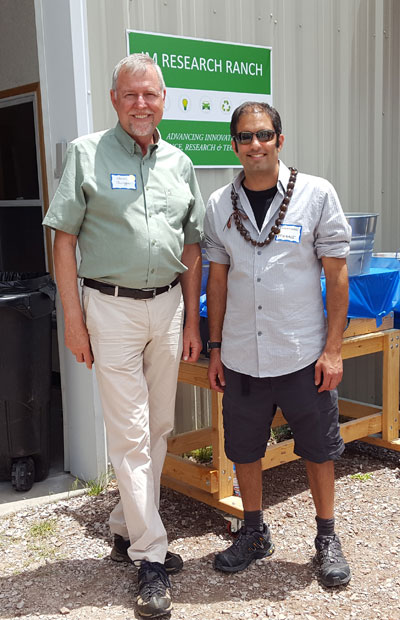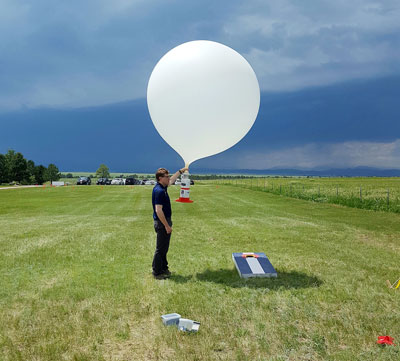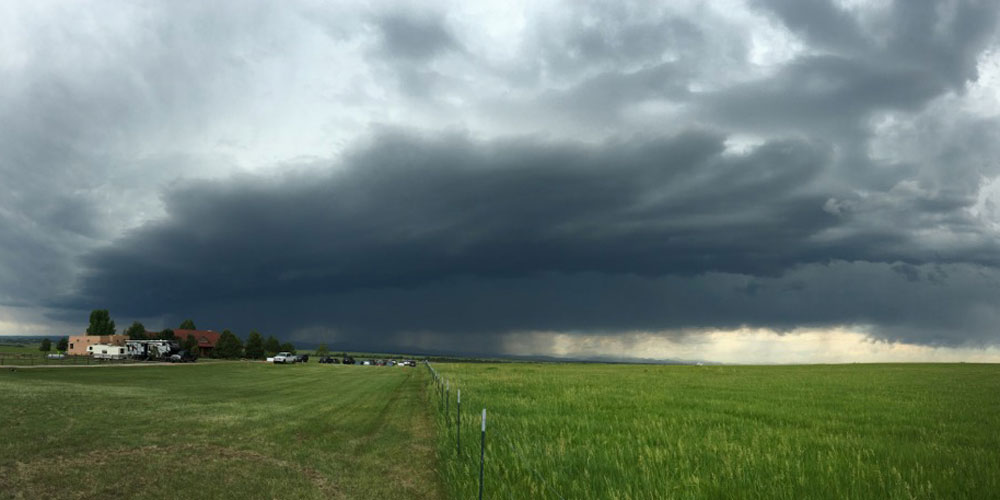Jonathan Merage Foundation

Researcher Dr. Steve Businger and Jonathan Merage, founder of the Jonathan Merage Foundation, at the Jonathan Merage Research Ranch in Colorado after the storm balloon release.
This spring, the Jonathan Merage Foundation embarked on a long-term partnership with SOEST to explore how long-range lightning data can potentially improve storm forecasting.
“Through the ingest of lightning and storm balloon data, this project aims to increase our ability to map water vapor and heat associated with condensation of water in hurricane storm clouds in the core of the storm,” said Dr. Steven Businger, chair of the Atmospheric Sciences Department at UHM and project lead. “In the process, details of the initial storm circulation in the hurricane model will be improved.” In future years, the way the lightning data are ingested into the hurricane model will be refined, to provide a more sophisticated and balanced approach that improves the way in which individual storm clouds evolve in the model. A number of poorly forecast recent hurricanes will be targeted as case studies to spur improvement in hurricane simulation and prediction.
In future years, the way the lightning data are ingested into the hurricane model will be refined, to provide a more sophisticated and balanced approach that improves the way in which individual storm clouds evolve in the model. A number of poorly forecast recent hurricanes will be targeted as case studies to spur improvement in hurricane simulation and prediction.
Businger has been a pioneer in storm balloon development and suggests that floating storm balloons at low levels into a hurricane will provide crucial data on the energy exchange between hurricanes and the ocean surface beneath. The goal is to construct affordable storm balloons that possess the needed buoyancy control to allow them to remain near the ocean surface as they move towards the eye of the hurricane. They also contain GPS for position information and Iridium satellite communication to send data back on the energy exchange that governs hurricane intensity.
“Hurricanes are the most destructive storms on Earth and our ability to accurately forecast changes in their strength before landfall has not improved significantly in 20 years,” said Businger.

The project began the last week of June in Colorado with the launch of the first storm balloon. “It was a picture perfect first release,” said Businger.
For more photos of the storm balloon, flight path, and release site, please visit the UH Storm Balloon flickr page at www.flickr.com/photos/uhawaii/sets/72157669316265320/.
For more information about Dr. Businger’s severe storm work, please visit his website at www.soest.hawaii.edu/met/Faculty/businger/.
Questions? / More Information
If you would like to learn how you can support UH students and programs like this, please contact us at 808 376-7800 or send us a message.
